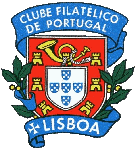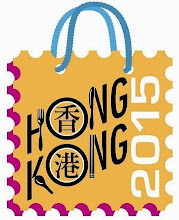

The
centenary of the birth of several characters of Portuguese history and culture
will be celebrated in 2011. It is a basic civic duty to recall the work that
made them notable. And it is a national imperative to pursue the virtues of
those who “freed themselves from the law of death through valorous work”. Thus
it is the intent of this philatelic issue to evoke renowned ancestors who have
distinguished themselves by dignifying and uplifting the History and Heritage
of our Country. Alves Redol (1911-1969) was born in Vila Franca de Xira 100
years ago; he debuted with the novel Gaibéus (The Rice Field Workers), 1940,
which marked the beginning of neorealism in Portugal, a literary movement
characterized by an assumed social-political intervention and which is also
present in his other 16 novels. Among these, Barranco de Cegos (The Gully of
the Blind), 1962, which is considered his masterpiece, deserves highlighting;
this novel was the beginning of his existential phase, during which he gave a
more in-depth depiction of his characters and of their psychological evolution.
His work also includes tales, short stories, plays, ethnographical studies and
child-youth literature. Manuel da Fonseca (1911-1993) was also born 100 years
ago in Santiago do Cacém; also linked to the neorealist aesthetic, his literary
debut occurred in 1940 as well, with the novel Rosa dos Ventos (Rose of the
Winds), regarded by Eduardo Lourenço, renowned Portuguese critic, philosopher
and writer, as “one of the most creative collections of neorealist poems”. A
remarkable storyteller Aldeia Nova (New Village), 1942, O Fogo e as Cinzas (The
Fire and the Ashes), 1951, O Anjo no Trapézio (An Angel on the Trapeze), 1968
and Tempo de Solidão (Time of Solitude), 1973, his works convey the atmosphere
of the land and of the people of the Alentejo region in the 30’s and 40’s, especially
in his novels Cerromaior (The Biggest Hill), 1943, adapted to the cinema by
Luís Filipe Rocha in 1980, and Seara de Vento (Harvest of Wind), 1958. Trindade
Coelho (1861-1908) was born in Mogadouro 150 years ago and is chiefly known as
the author of a book of stories Os Meus Amores (My Loves), 1891, in which he
portrays the rural traditionalistic atmosphere and the popular language of his
homeland, and of In Illo Tempore, 1902, a memory book of his times of bohemia
at the University of Coimbra where he studied and graduated in Law, at his own
expense after having failed in the first year. He was an attorney and later
deputy attorney-general – which enabled him to travel to different parts of the
country where he founded newspapers. He wrote books on jurisprudence and was
also engaged in pedagogy, ethnography and politics. Antónia Ferreira
(1811-1896), affectionately known as “Ferreirinha from Régua”, was born into a
wealthy family traditionally connected to the Port Wine trade, an activity
which she developed with great perseverance. She fought with great resolve
against the lack of support and against the wine pest (phylloxera), searching
for the most advanced ways to combat the disease. In her duties as manager of
the most important agricultural holding of the Douro region she was also
concerned with social aspects and created several social welfare institutions.
The economic development of the Douro region is, to a large extent, owed to her
entrepreneurial spirit. Eugénio dos Santos (1711-1760), architect and military
engineer, was born a century earlier in Aljubarrota; he was especially known as
the person responsible for the construction of the Baixa Pombalina (Pombaline
Downtown) following the great earthquake of 1755 that razed Lisbon to the ground.
As part of the team led by Manuel da Maia, chief engineer of the Crown, to him
is owed the ample, rectangular, well-designed and modern planning of the lower
part of the capital, transformed from a medieval burg into a city worthy of the
“century of the lights”, with the required magnificence that is especially
evident in the project created for the Praça do Comércio (Comércio Sq.).
Credits
Selo €0,32 - Alves Redol - foto Augusto Cabrita, col. António
Mota Redol; "Gaibéus" ( promenor da capa), ilustrações de Manuel
Ribeiro de Paiva, Edição Popular/ Inquérito.
Selo €0,47 - Manuel de Fonseca - foto e manuscrito, Museu
do Neo- Realismo
Selo €0,57 - Retrato de Trindade Coelho - lápis s/ papel,
Columbano Bordalo Pinheiro, Div. de Doc. Fotográfica / IMC / Museu
Nacional de Arte Contemporânea - Museu do Chiado; "in Illo tgempore"
(promenor ilustração e texto) edição 1902, livraria Aillaud.
Selo €0,68 - Antónia Ferreira (a ferreirinha) - óleo s/
tela, Manuel António de Moura, col. Sogrape Vinhos; Socalcos de Vinha no Alto
Douro, em desenho à pena aguarelado, Eufénio dos Santos / arquivo Academia
Nacional de Belas Artes (ANBA).
Selo €0,80 - Retrato de Eugénio dos Santos - foto
Emanuel Santos de Almeida/Museu Arqueológico do Carmo, Praça do Comércio,
Frontaria e Arco da Rua Augusta (promenor), desenho à pena aguarelado, Eugénio
dos Santos/ arquivo Academia Nacional de Belas Artes (ANBA).
Acknowledgments
António Motal Redol, Academia Nacional de Belas Artes
(ANBA), Divisão de Documentação Fotográfica / Instituto de Museus e
Conservação, Museu do Neo-Realismo, Museu Arqueológico do Carmo, Sogrape
Vinhos.
Technical
Details
Date
of Issue: 14 March 2011
Values:
stamps of €0,32, €0,47, €0,57, €0,68 and €0,80
Designer:
Folk Design / Sofia Martins
Printer:
Joh. Enschedé
Process:
4-colour offset lithography
Size:
stamps 40.0 mm x 30.6 mm
Perforation:
Cross of Christ 13 x 13
Paper:
White TR CPST331 110g/m2
Watermark:
Sheet:
sheets of 50 stamps



























.png)






































No comments:
Post a Comment